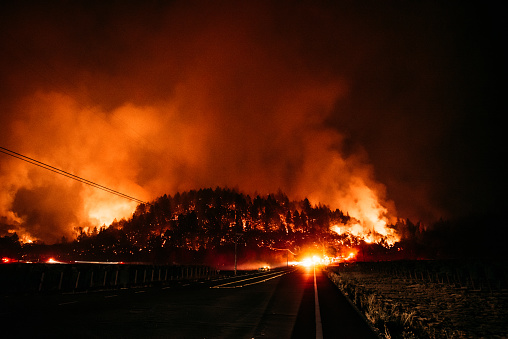—Expert Editorial by Alexis Sinclair is special counsel at Farella Braun + Martel
Property insurance is both a prudent choice by a business, as well as, in certain circumstances, a requirement, such as when a winery borrows money from a bank or commercial lender. If and when casualty events arise, insurance will support the rebuilding of operations and, likely, address losses of inventory. However, obtaining or affording property insurance is becoming increasingly difficult, with wildfires across the Western United States being a large factor. Wineries should not “suffer in silence” and know there is help available.

Is Property Insurance Required and, if so, What Is Required?
If you have any form of loan or other amount of borrowed money from a bank or other commercial lender, then the answer is “yes.” Loan agreements contain agreements requiring property insurance. This generally will be on such terms and in such amounts as the lender determines is necessary for the specific winery. Traditionally, this has meant coverage in such amounts to cover the full replacement cost of for property.
The consequence of not maintaining insurance as required allows the lender to purchase insurance on a winery’s behalf—known as “force placing insurance.” However, in this situation, a lender is not required to purchase the least expensive or most coverage. Typically, a lender will purchase coverage for only the outstanding amount(s) owed to the lender following a casualty. This can result in no proceeds left for a winery to then use to rebuild its business.
Availability of Property Insurance
Presently, many wineries in California are finding that they either can no longer purchase insurance or the winery has to pay a materially significant increase in the annual premium for likely less coverage than it had in years prior. For wineries facing these situations (non-renewal and/or significant increases in premiums), talking to your insurance broker as well as your lender as early and as often as possible can help.
Insurance brokers see many different situations arise and are constantly working with wineries to help navigate a winery’s insurance renewal process. The broker’s advantage is they see many different wineries’ situations and can adapt to the changing insurance market. Brokers talk directly with multiple insurance carriers and, in many cases, have successfully helped wineries obtain insurance coverage following a notice of non-renewal.
Also, having a dialogue with its lender can also benefit a winery. Similar to the broker, lenders see many borrowers’ situations and can help wineries discover solutions to obtain insurance as well as assist with a winery’s compliance with the insurance requirements of a loan.
Costs of Property Insurance
Even if coverage is available, the cost and amount of coverage may be prohibitive to the winery’s business. Brokers and lenders can also be resources for strategies to manage costs and coverage.
Cost solutions can range from relatively simple fixes to more intensive threat mitigation. For example, a winery can consider moving its inventory offsite to a third party warehouse. In general, third party warehouses are located in areas that are much less likely to be affected by fire or casualty. As a result, a winery could then obtain insurance coverage for its inventory and, possibly even at a more affordable premium.
Other solutions directly focus on the winery and surrounding property itself. Firewise USA provides a valuable starting point for addressing fire risk. Additionally, a local fire department may offer a service where the fire department will evaluate a property and provide suggestions for better protecting it from fire. These can range from creating fire breaks and trimming vegetation to more simple solutions such as where trash is located. Trash can be a significant fuel source.

Legislative Solutions
At present, however, wildfires are not addressed at a national level in the same way that hurricanes, floods, and earthquakes are. This results in states having to address wildfire risk on a state by state basis. In California, legislators and regulators are focusing on the immediate need to secure or retain insurance coverage as well as developing a sustainable insurance market in the coming decades.
The Catastrophic Wildfire Insurance Act (AB 1522), making its way through the California legislature, would create catastrophic wildfire insurance for moderate and high risk places in California. This would create another class of insurance to insure more of California, backed up by a reinsurance fund, financed by taxes, tax exempt bonds, assessments, and other similar measures. The goal being to maintain a healthy marketplace to insure those parts of California affected by wildfire.
It’s worth repeating: Speak with your broker and/or lender as early and often as needed to help address your individual situation. Trade groups and associations can be other valuable sources of information and assistance.
If you would like a more detailed discussion on wildfires, property insurance and requirements of loan facilities, please visit “Disaster Matters: Property Insurance and the Wine Industry.”
_______________________________________________________________________

Alexis Sinclair is special counsel at Farella Braun + Martel, where he represents major institutional and other lenders as well as borrowers in the wine industry with financing transactions. He can be reached at asinclair@fbm.com.

















